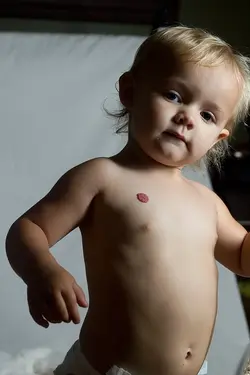I never said anything about putting it far away. Keep it close to the subject. A softbox usually has a mid baffle to spread the light more to avoid what you were saying.
if you have only one light and dont want shadow, put the subject farther away from the background and or raise the light. That way the shadow will be below the frame and not on the wall. As far as 8"x36" softbox, why not? It is bigger than a bare flash.
Because if you get it far enough away from the subject to light anything bigger than a pop bottle... the light will be just as hard as using bare flash. The way a flash puts out light... I bet there is one big hotspot in the middle of the softbox.. with very light light at either end. Hardly optimal...
A few people here seem to be confusing a "
strip light" with a "softbox". Pretty common mistake to make. Strip lights make crappy main lights. They were never designed to be "main" or "key" lights for portraiture. They are fine for lighting SMALL, and SPECIFIC areas, but they absolutely suck as broad area lights, because they are designed to RESTRICT the light beam. Strip lights were originally designed to work with "real" studio flashes, which radiate light in all directions, from a pretty big, 360 degree circular flashtube. A speedlight on the other hand, has a teensie little strip of flashtube, about the size of half a cigarette. In a shallow, cheap, Chinese-made strip box, the flashtube is often about four inches from any baffle, and there really is little "spread"of the light inside the strip box. So, while the front is 8x36, a speedlight's dinky little flashtube, aiming straight ahead, might not always work the way a
strip light was designed to work.
A strip light is NOT a "softbox". A softbox has some depth between the flashtube, and the internal baffle, allowing flash to spread out some. One of the bigger problems with using speedlights in light modifiers that were never engineered for speedlights is that the device often will not really "fill" with a speedlight's output, which is at close ranges, a tiny little rectangular emission of light; in cramped spaces like inside a strip light, or even in parabolic deep-bowl umbrellas, the majority of modifiers were designed to work best with a broad, circular, 360 degree, wide-angle FLOOD of light, flooding the entire surface, and then being reflected out evenly.
As the tests at Robgalbraith.com confirm, even an inch or two difference in exactly WHERE a light is positioned can make a HUGE difference in total light output. Buff makes a speedlight-offset mounting device for its PLM parabolics which greatly increased output, by moving the flash about 1 and 3/4 inches! A butter knife is not a fillet knife.


 Yes, exactly like that... I never remember about that 'site!
Yes, exactly like that... I never remember about that 'site!






![[No title]](/data/xfmg/thumbnail/30/30986-0fbf9af8f70b46ce37aeb237ba68b573.jpg?1734159039)

![[No title]](/data/xfmg/thumbnail/31/31097-95606cf1bf0ecc862078bc333f20d4f7.jpg?1734159259)
![[No title]](/data/xfmg/thumbnail/42/42397-30faa170de7ed9be38adf00b9b26a220.jpg?1734176928)



